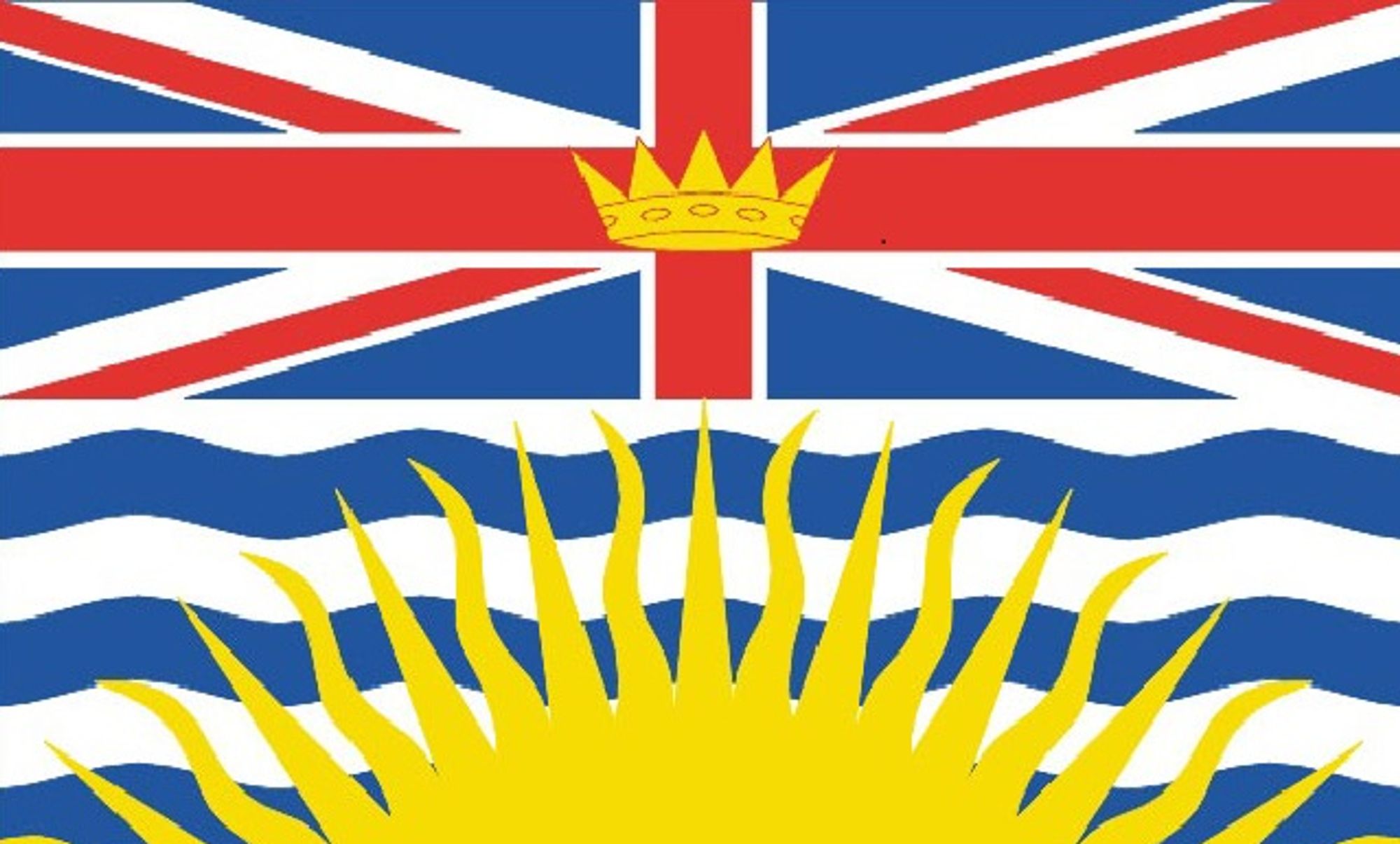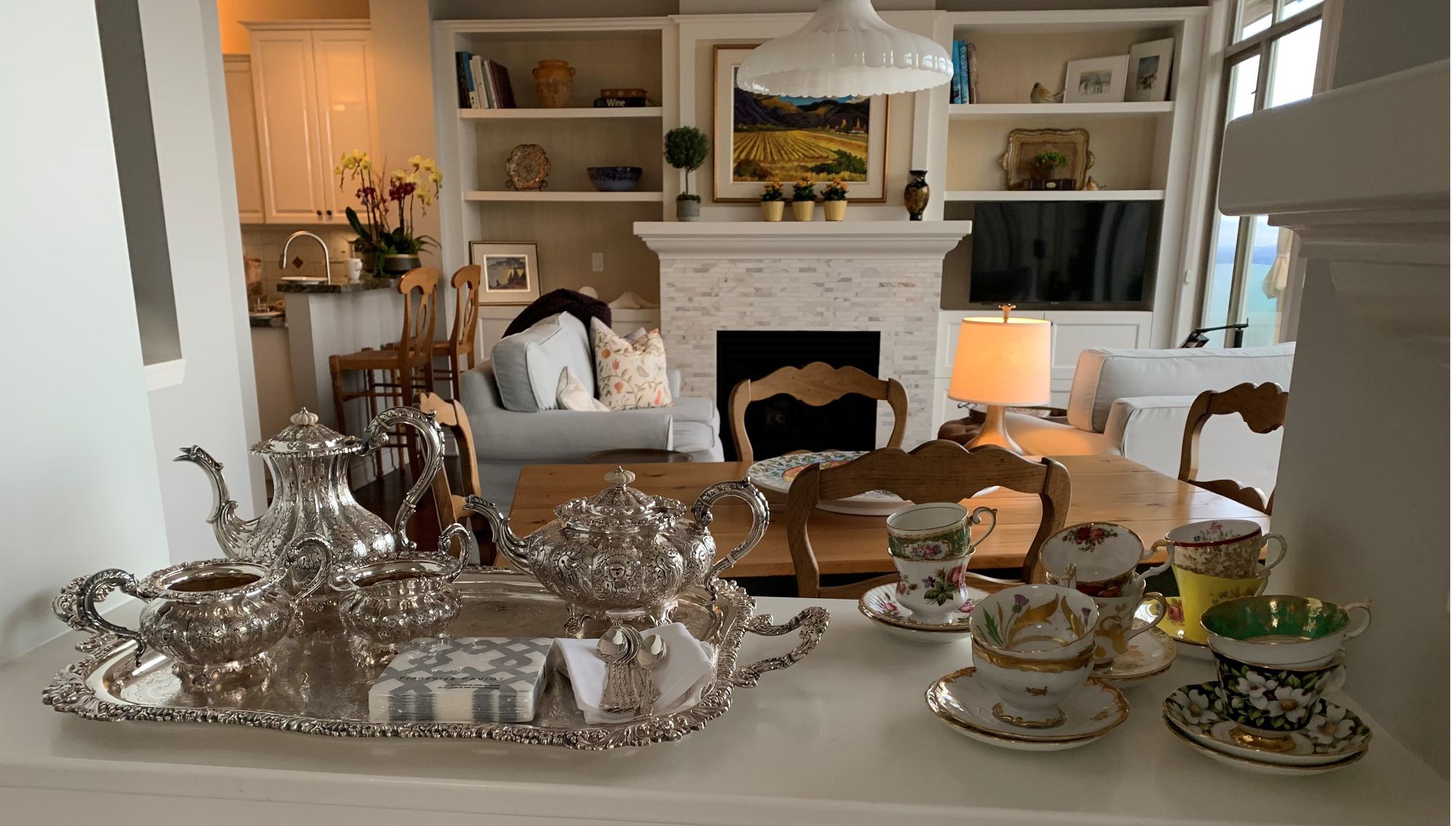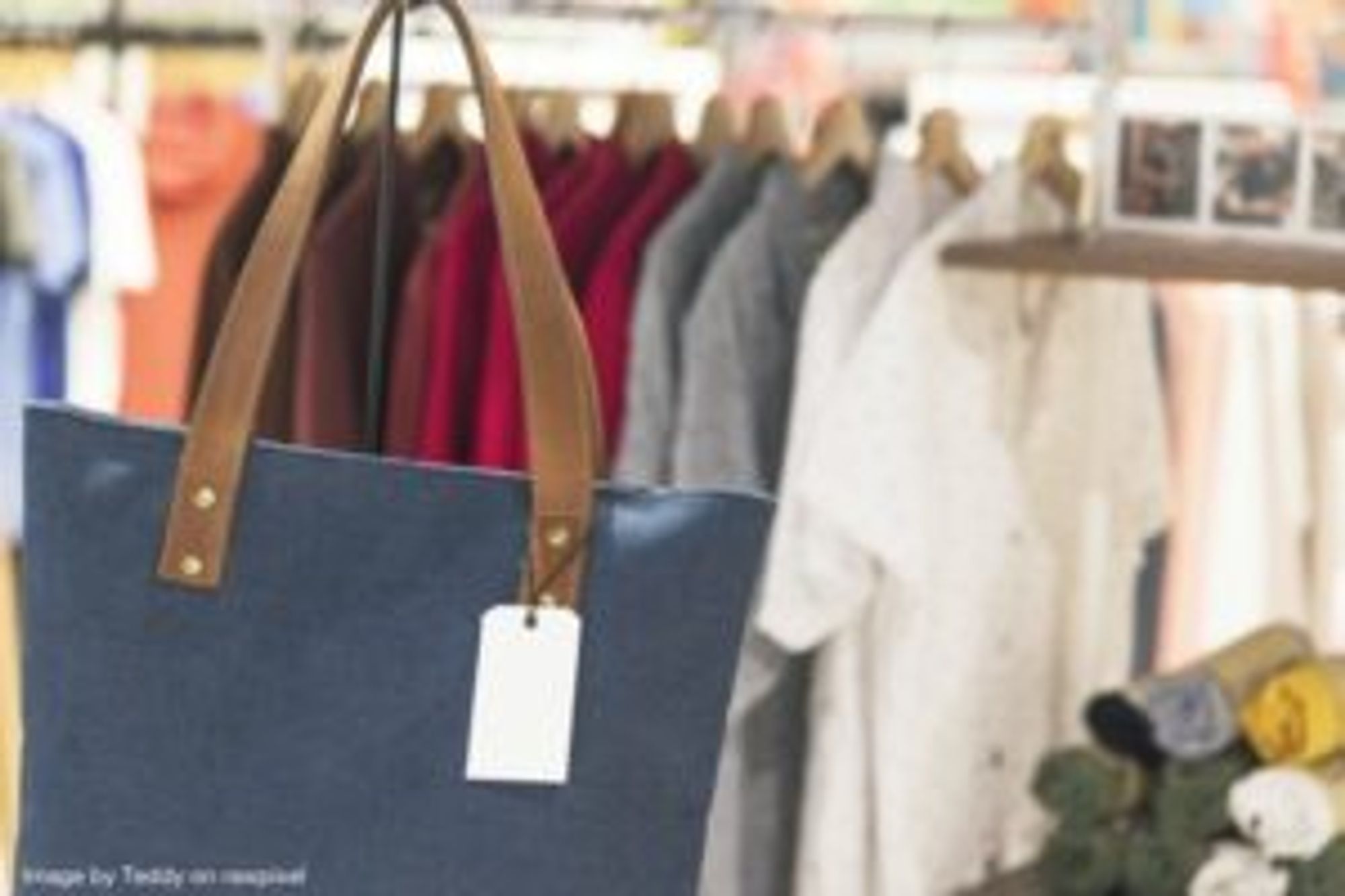Who Gets Nona’s Cameo?
Identifying, Protecting, Valuing and Distributing Estate Household Goods and Personal Effects in British Columbia
By: Nicole Garton, President, Heritage Trust
Disclaimer: These materials do not constitute legal advice. The information contained in this guide has been prepared to assist executors to administer estate personal property. Given the changing nature of the law, executors should exercise their own judgment when reviewing the content and seek legal and other expert advice whenever required.
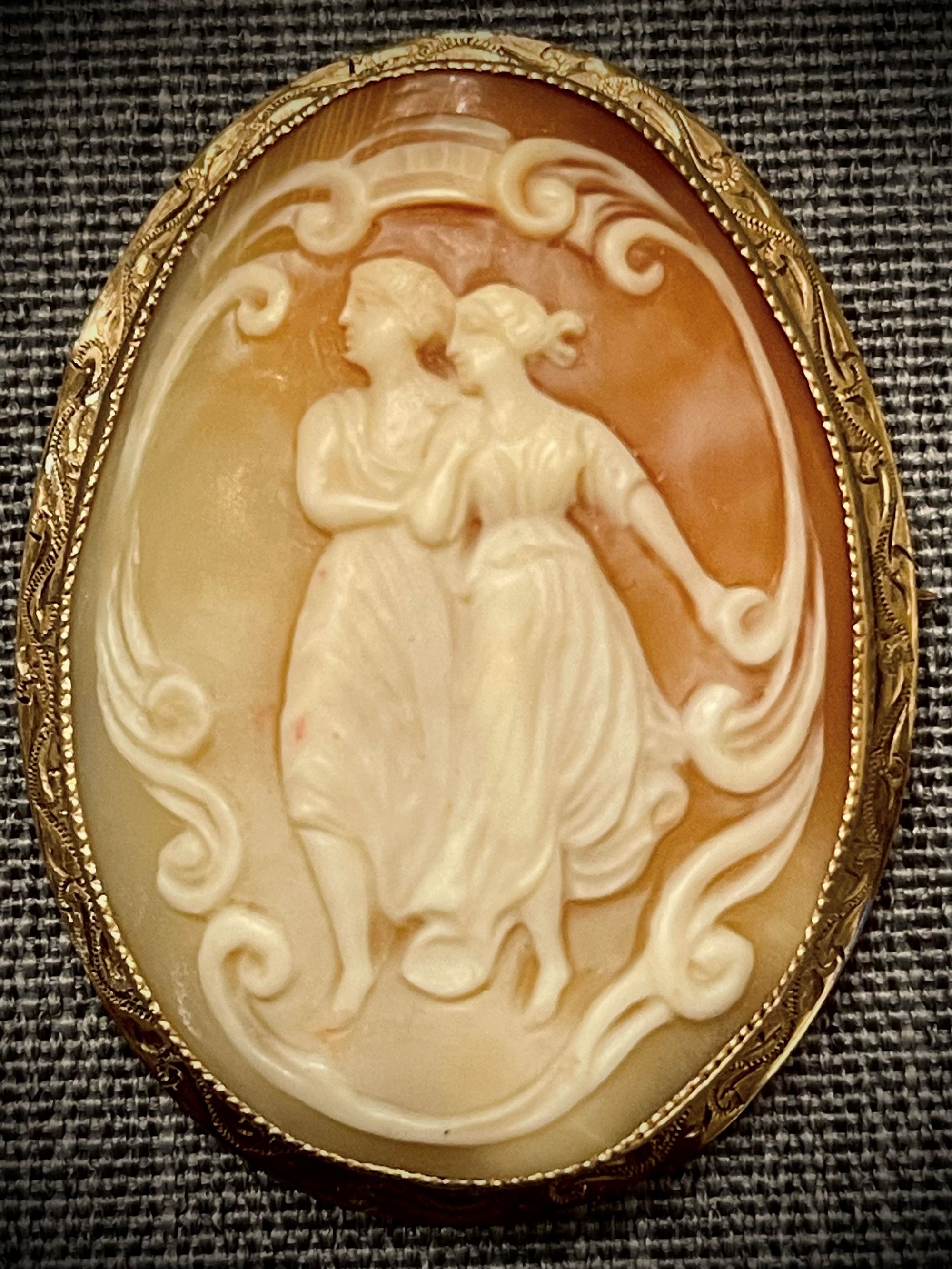
This beautiful hand-carved, shell cameo, originating from late 19th century Italy, was passed down by the author's great-grandmother Emanuela Berardino (nee Giliberti), who was born January 27, 1895 in San Michele di Serino, Province of Avellino, Campania, Italy.
This beautiful sterling silver tea service, originating from Victorian-era England, was passed down by the author's great-grandmother Catherine Mary Whitlaw (nee Livingstone), who was born November 7, 1904, in Deloraine, Manitoba, pictured as a newlywed in 1927 with her husband George (Whit) Whitlaw.
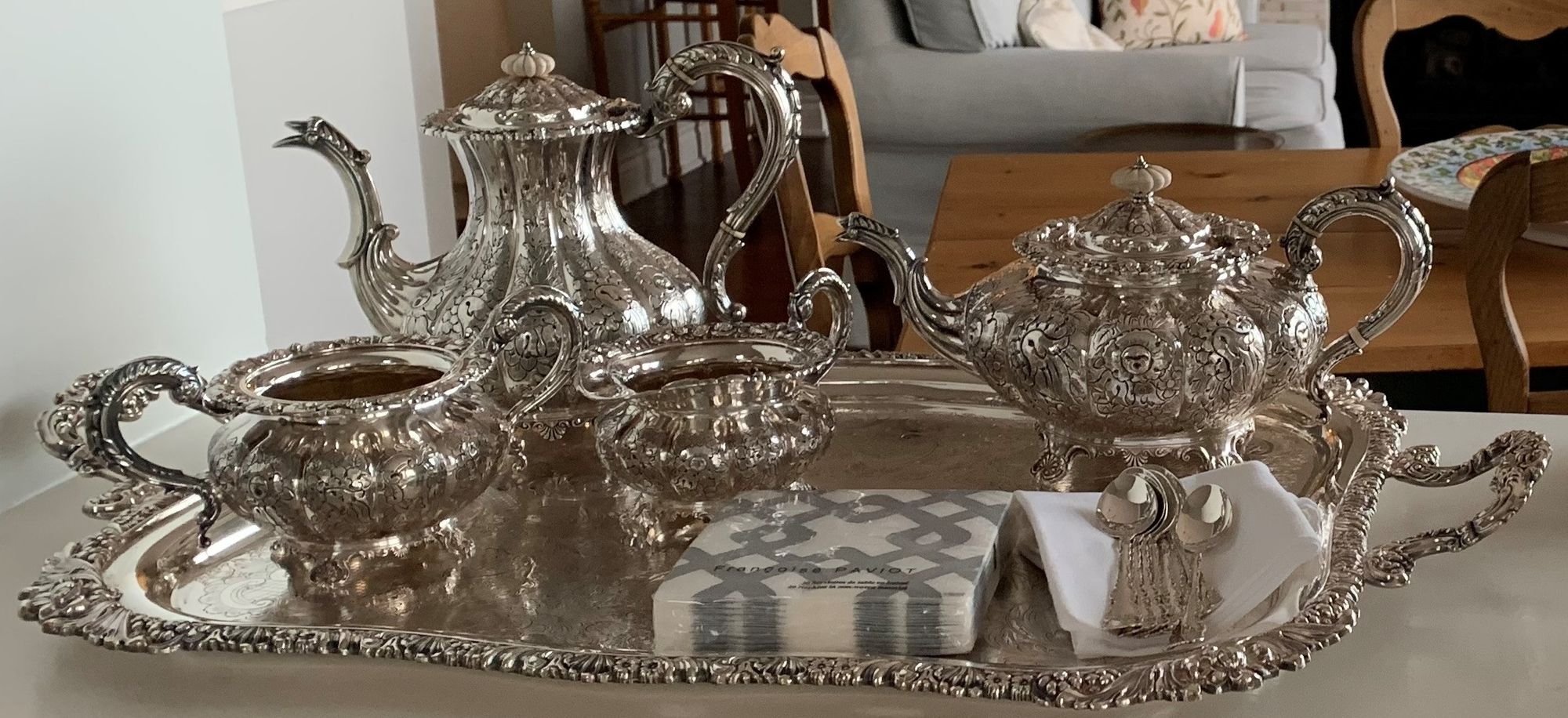
.jpg?table=block&id=e2b0b33e-54d0-41c5-9193-cc68345d1b5a&cache=v2)
Many people possess objects they feel are almost part of themselves. These cherished objects, and the stories they tell, are often bound up with their personal identity and form part of the narrative of how they see themselves as persons in the world. Across the generations, precious objects can symbolize personal meaning, knowledge, values and shared history - for individuals, for families and for society.
The things people own do not die when they die. Wealth, or the value of property, is relatively immortal. Further, personal property with insignificant economic value may have tremendous symbolic value to the testator and beneficiary. Which leads to what estate planning is essentially about: assisting clients to extend their personal identity, life work and accumulated property into the future to outlive their physical selves.
The desire to somehow transcend mortality and sustain one's identity beyond the grave is both universal and strong. People wish to prepare their property for immortality and feel better when they formulate a plan, finalize it and thereby prepare to transcend the grave. Clients' inherent desires to transcend their limited existence by ensuring their property is passed down as they choose is echoed in the phrase we often hear as estate planners: the wish for "peace of mind."
Of all the critical tasks entrusted to a personal representative, the task of identifying, protecting, valuing and distributing a deceased's personal property is a fundamental and important one, both legal and symbolic.
Table of Contents
1. What Should a Personal Representative Do Immediately After Death?2. Definitions: Personal Property, Household Furnishings, Antiques, Vintage?3. Who Receives Personal Property and Household Furnishings at Law?4. How Does a Personal Representative Clean Out a Home?Prior to Clean Out Day Clean Out DayWhere to Sell or Donate Items?5. How Does a Personal Representative Allocate Personal Property Between Beneficiaries and Resolve Disputes?6. How Does a Personal Representative Transfer Personal Property to Beneficiaries?7. What About the Costs of Shipping and Handling?8. Conclusion
1. What Should a Personal Representative Do Immediately After Death?
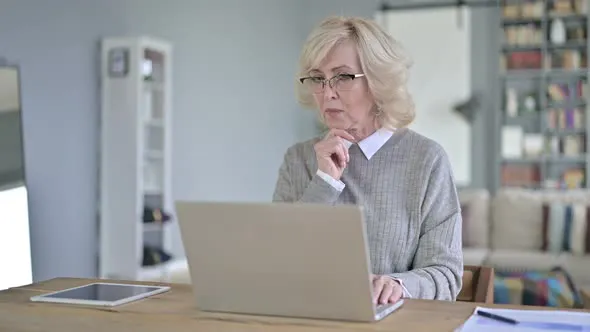
As soon as possible after death, the personal representative should take steps to safeguard the deceased’s assets, including personal assets.
It's important to note that the personal representative is not entitled to make any personal use of estate assets.
Immediate steps to be taken by the personal representative are as follows:
- Secure the residence and other storage locations of the deceased's personal property, including collecting all keys. Enable alarm systems. Advise all relevant parties not to attend the residence or storage facilities without your prior knowledge and express approval. Ensure that you immediately clarify to all relevant parties that they are not to remove anything from the home or storage facilities.
- If there are concerns that the home or storage facility is not secure or under roper supervision, consider changing the locks, advising the police and/or making arrangements with a security firm to patrol the residence or facility.
- Ensure that there is sufficient insurance coverage for the deceased’s assets, including personal property.
- The insurance policy should include fire, vandalism, theft and liability coverage. Check the amount of the policy, the expiry date and type of policy. A replacement cost insurance policy typically pays the dollar amount it will take to buy a new item at the time of a claim. An actual cash value insurance policy factors in depreciation to provide reimbursement based on the current value of an item.
- While the policy may cover personal property, that coverage typically comes with sub-limits for certain types of property, and sometimes there are even limits for each item. If not already in place, consider "scheduling" certain items, which means purchasing separate coverage to further protect specific high-value items, such as jewelry, art or musical instruments.
- Notify the deceased’s insurance agent or insurance company of the death. Note that most residential polices have vacancy limits, often 30 days or less. If required, obtain new vacant property insurance coverage.
- For vehicles, check the insurance policy for sufficient coverage (including the limits on third-party liability insurance) and for permitted uses.
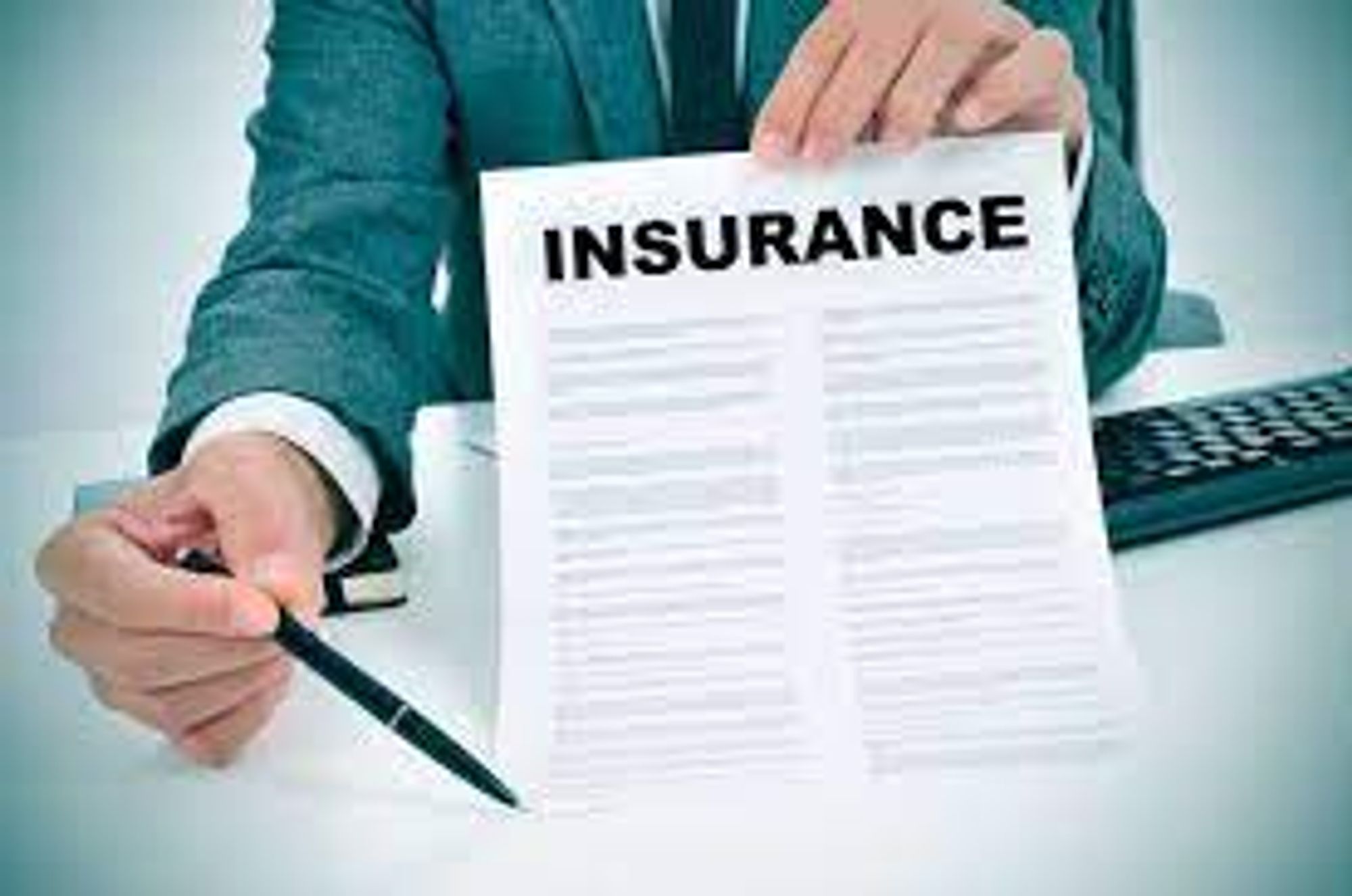
Note: if the vehicle is driven after the death of the owner, there is potential liability for the estate, and for the personal representative personally, if the vehicle is used in a manner not covered by the liability insurance or a damage award exceeds insurance limits. Consider putting the vehicle into storage and insuring the vehicle for fire and theft only to limit the risk of liability.
- Search for, prepare an inventory and take pictures of personal assets. A detailed and accurate inventory of personal property is a critical task.
- If a grant of administration by the British Columbia Supreme Court is required, the personal representative, pursuant to Supreme Court Civil Rules Rule 25-3(2), must submit an Affidavit in Form P10 or Form P11, attached to which as Exhibit A is a Statement of Assets, Liabilities, and Distribution (also known as the “Disclosure Document”) that lists and provides values for the deceased's property, including personal property such as jewelry, artwork, furniture, vehicles etc.;
- As a checklist to ensure that all of the deceased's property, including personal property, is correctly identified and administered.
- make and model;
- year;
- identification (serial) number;
- registered owner or owners; and
- value.
- the name of the vessel;
- the port of registration;
- the vessel registration number; and
- value.
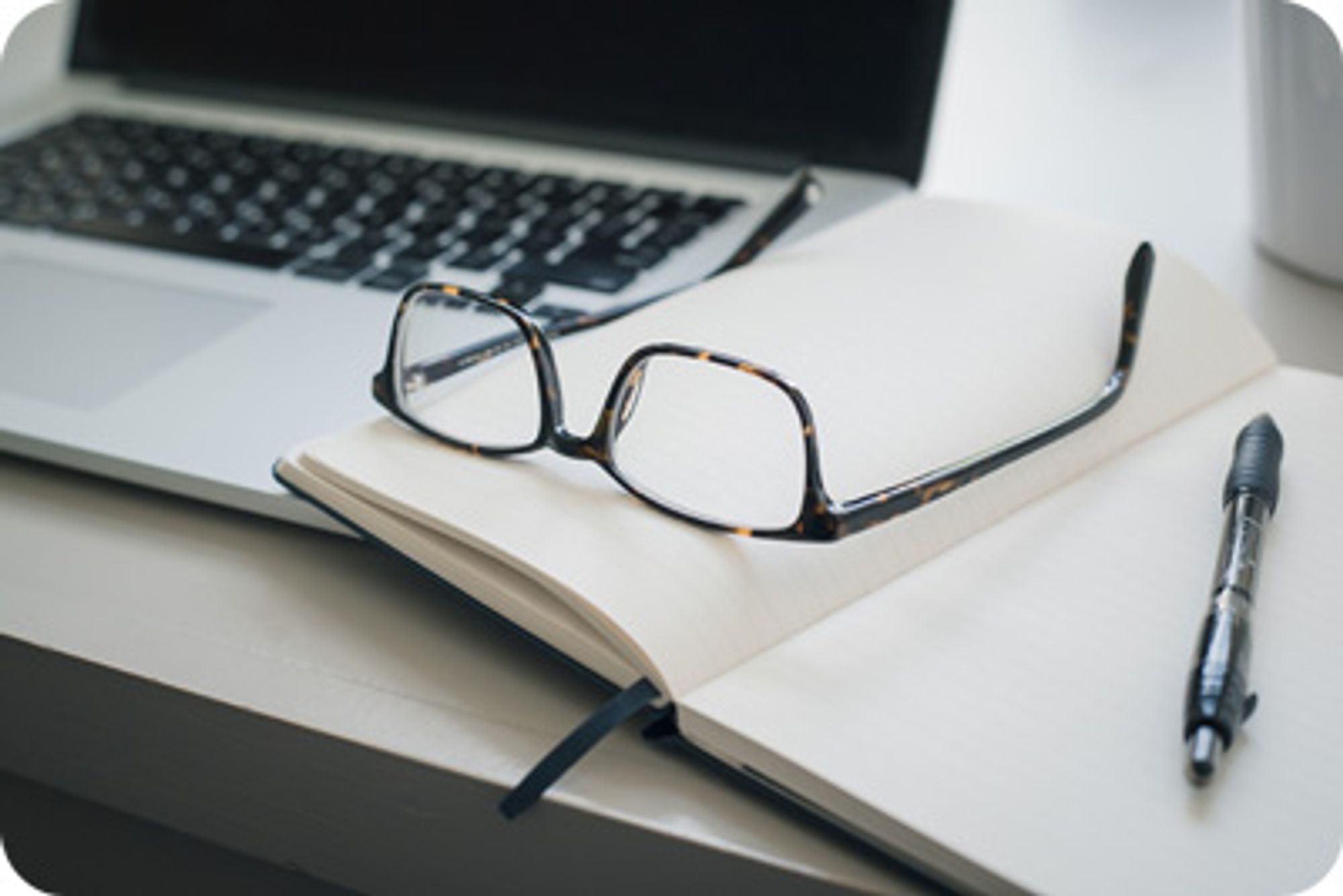
Specifically, a detailed and accurate inventory is required:
In many cases, it is sufficient to describe household goods and personal effects in a Disclosure Document by a general category (for example, “household goods”). Where household goods and personal effects are described in one general category, a lump sum value is often sufficient. If the goods or effects have no market value, that fact should be stated (for example, “no commercial value”).
The personal representative should separately describe any individual items expressly referred to in the will in the Disclosure Document and if the item was no longer owned by the deceased at death, state that fact in the substance of the P10 affidavit. For example, where the will gifts a specific piece of jewellery, the personal representative should expressly describe that specific piece in the Disclosure Document.
Safety Deposit Boxes

If the deceased has a safety deposit box, the personal representative will need to make an appointment with the bank and present the death certificate and appropriate ID to gain access to the box. The box will be opened in the presence of a bank staff member who acts as a witness and lists all the contents of the box, usually on a bank prescribed form. An original will of the deceased holder of the box may be removed after the inventory is prepared. The remainder of the contents of the box are released to the personal representative after receipt of the estate grant. See s. 183(1) of the WESA.
While it is no longer necessary to disclose the existence of a safety deposit box in the Disclosure Document, any items of value disclosed in the listing of the safety deposit box should be included as assets in the Disclosure Document.
The probate registry will allow the value of the assets in the safety deposit box to be described in the Disclosure Document as “to be determined”, provided a paragraph is also included stating that the assets cannot be removed to be valued until a grant has been issued. If items in the safety deposit box are subsequently appraised and have market value, the personal representative will be required to file a Supplemental Affidavit of Assets and Liabilities to disclose that value.
Vehicles
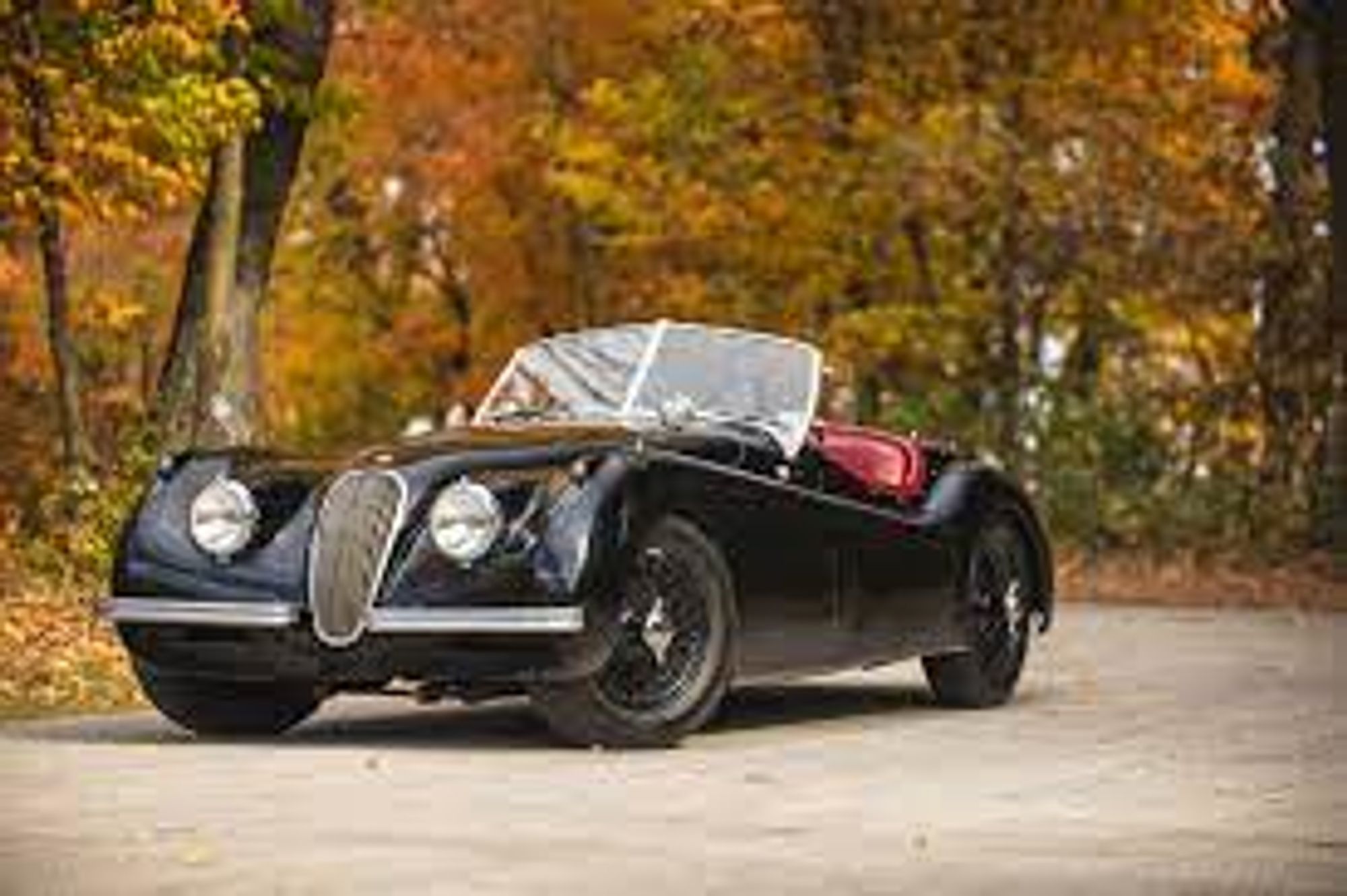
The description of vehicles in the inventory and Disclosure Document should include:
A car dealer will often disclose the “Blue Book” value. Or, for most cars, the value can be ascertained with fair accuracy from newspaper classified advertisements or from online
services such as autoTRADER.ca.
Boats

The description of a registered vessel in the inventory and Disclosure Document should include:
The “Blue Book” value should be obtained to facilitate subsequent transfer. For licensed
vessels, obtain proof of ownership in the form of a bill of sale and search for Personal Property Security Act registrations relating to the vessel.
If a vessel is involved, inquire into the moorage arrangements as there may be a boathouse lease or a foreshore or moorage licence.
- Arrange for appraisals of the deceased’s personal assets, as required.
- the personal representative has special knowledge of the assets;
- the valuation is not of great importance. For example, the amount of potential probate fees or income tax involved is small and/or there is a sole beneficiary; or
- expert valuation is not required to preserve equality between beneficiaries.

If an estate includes items of valuable personal property, accurate values must be obtained to comply with the requirement to disclose accurate values in the Disclosure Document, to calculate the amount of the probate fees payable on application for an estate grant, to determine capital gains and losses for income tax purposes and to facilitate the sale or distribution of the personal property.
Expert evaluations also enable a personal representative to ensure equitable distribution of valuable personal property items between multiple beneficiaries. Further, when the will allows the beneficiaries to divide up personal property, valuations may assist them to reach agreement, since everyone is more likely to feel that the division has been done fairly.
Note that the description of the articles and their valuation could have income tax consequences. The general rule is that the relevant date for purposes of valuation is the date of death, although there may be other dates on which valuation is required for tax purposes. If the tax cost (that is, the taxpayer’s cost for purposes of calculating the taxpayer’s gain or loss when they dispose of the property) is not known, it may be necessary to obtain valuations as at the date of acquisition and the date of death.
Note that the value for insurance purposes (usually the “replacement value”) should in theory be the same as the value for tax purposes (usually the “fair market value”). In practice, the replacement value is almost always higher than the fair market value. When instructing a valuator, it is necessary to give clear instructions as to which value is required, and often to ask for both.

Where a personal representative cannot accurately value certain types of personal property, such as coin collections, artwork, antiques, jewelry, motor vehicles and firearms etc., professional appraisers should be consulted for evaluation and formal appraisal.
Organizations to consult for evaluation information and referrals to qualified, professional appraisers:
In some cases, a personal representative may make their own valuation; for example, when:
2. Definitions: Personal Property, Household Furnishings, Antiques, Vintage?
- "personal property" means every kind of property other than land;
- "household furnishings" means personal property usually associated with the enjoyment by the spouses of the spousal home;
- Antique refers to an item that is at least one hundred years old.
- Vintage describes older items that are not yet one hundred years old. Vintage pieces are original to the period that produced them and not reproductions.
- A collectible refers to anything people collect, which are often, but not always, older items on their way to becoming antique.
Specifically, the definition of “household furnishings” does not include items that are predominantly “personal” in nature and are without a household use or a recognizable connection to the use, enjoyment, or proper functioning of the home. Zeitler v. Zeitler Estate, 2009 BCSC 500
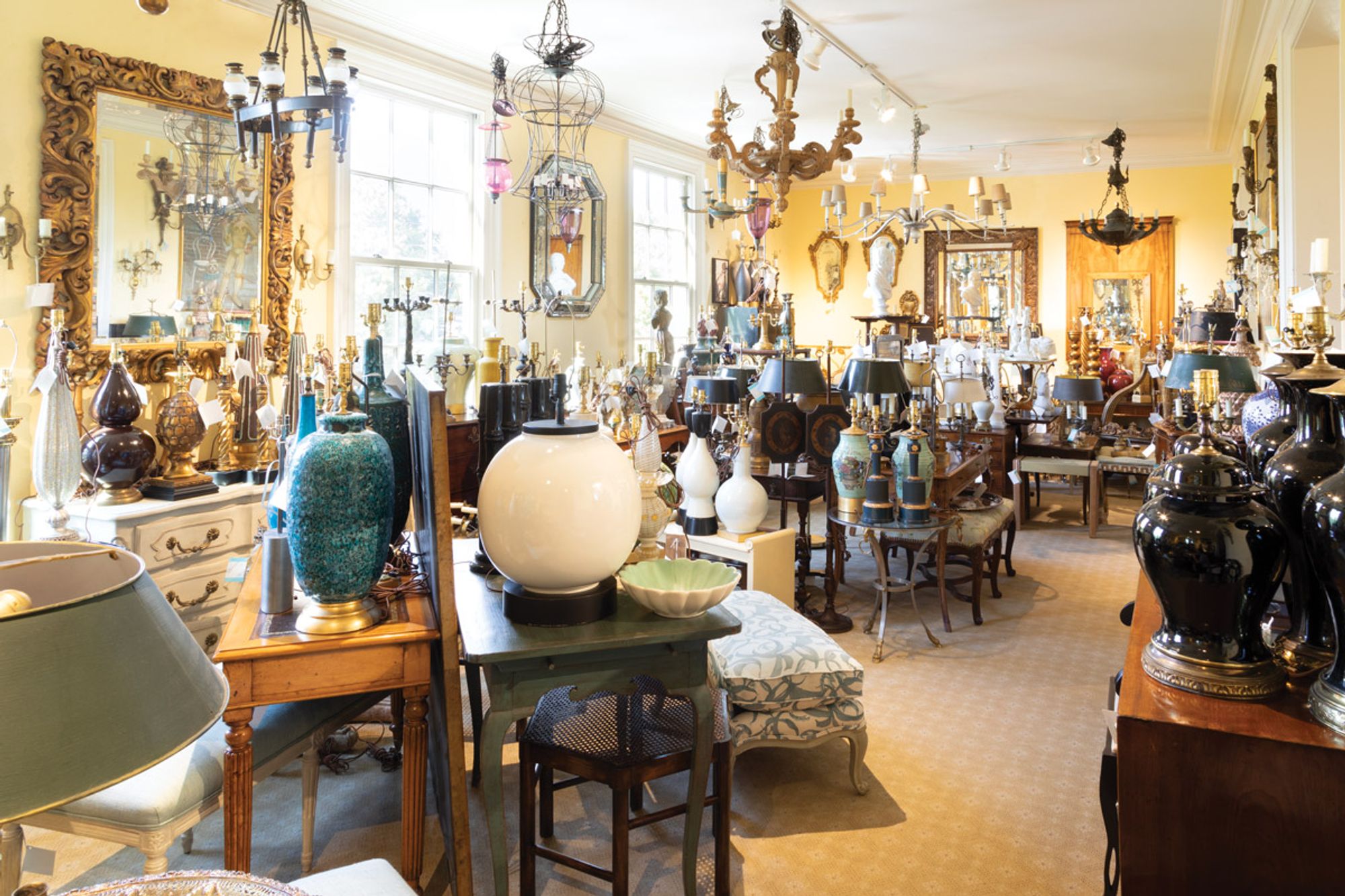
When considering the value of personal property items, consider whether they are antique, vintage or collectible:
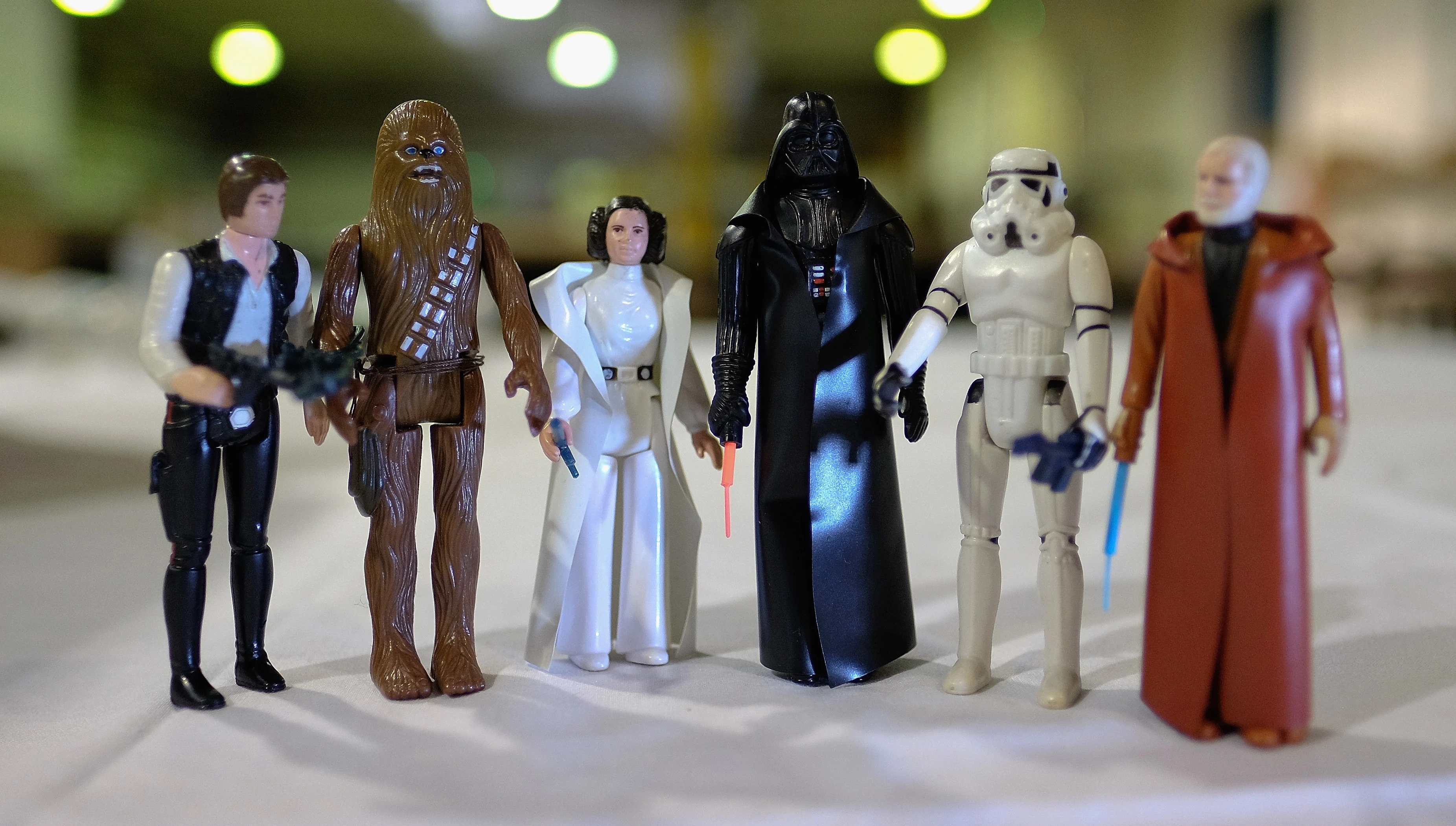
3. Who Receives Personal Property and Household Furnishings at Law?
- If there is a valid Will, it governs who receives particular items.
- A “specific gift” means a gift of identifiable property in the will, such as a car, watch or jewelry.
- A "residual gift" refers to a gift of part or all of the residue of the estate, meaning the part of the estate that is left over after all of the other gifts have been paid out. This includes the distribution personal property items if not specified in the Will.
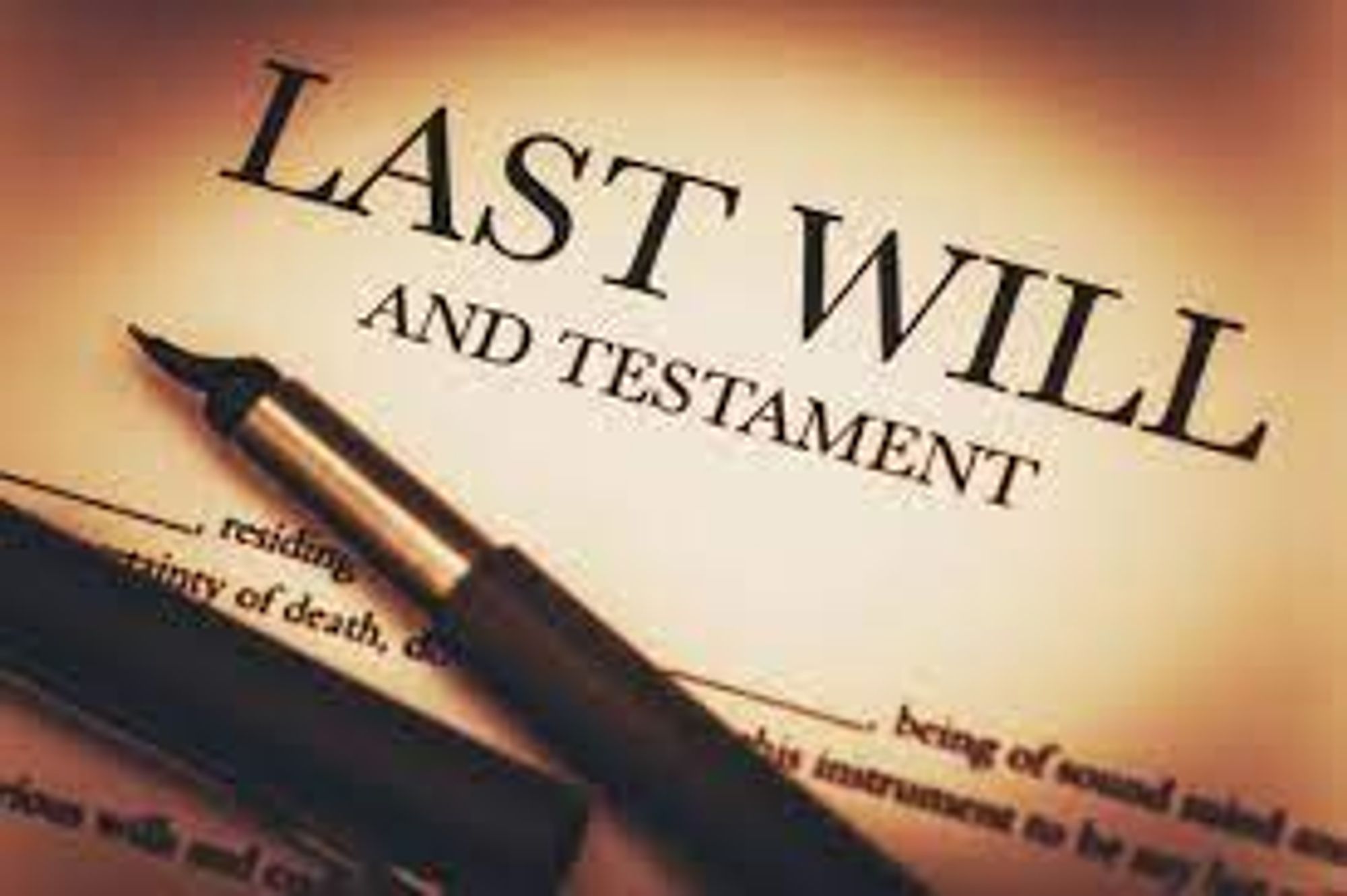
Property that is subject to the terms of a will is said to "pass" by the will and generally includes all assets over which the deceased had complete dominion, control and beneficial interest. This includes tangible personal property such as furniture, artwork, jewelry, vehicles etc.
WESA s. 41 (1) A person may, by will, make a gift of property to which he or she is entitled at law or in equity at the time of his or her death, including property acquired before, on or after the date the will is made.
(2) Unless a contrary intention appears in a will, when a will refers to property, the will, with respect to the property, is to be interpreted as if it had been made immediately before the death of the will-maker.
(3) A gift in a will
(a) takes effect according to its terms, and
(b) subject to the terms of the gift, gives to the recipient of the gift every legal or equitable interest in the property that the will-maker had the legal capacity to give.
A gift of personal property in a will may be “specific” or “residual.”
It is common for a will-maker to relegate personal property dispositions to the discretion of an individual or individuals, according to any future memorandum that may be in place at their death or according to any wishes made known to beneficiaries. Such will provisions are non-binding upon a personal representative, however the probate registry may require any list referred to in the Will to be disclosed as part of the probate process and notice of probate provided to each of the intended recipients.
Two sample non-binding memorandums of personal effects:
A specific gift “adeems”, or fails, if at the will-maker’s death the specified property is not found among their assets because it's lost; the will-maker has parted with it; the property has ceased to conform to the description of it in the will; or the property has been wholly or partially destroyed.
Section 48 of the WESA provides relief for the beneficiary where the subject of a specific gift is disposed of by a “nominee” of the will-maker during a time when the will-maker is not legally capable and there is no contrary intention in the will. “Nominee” is defined in s. 1(1) of the WESA as a committee, attorney, representative under a representative agreement, a person appointed under s. 51(2) of the Indian Act, R.S.C. 1985, c. I-5, or the Minister of Indigenous Services.
If the property specifically gifted in the will is disposed of by a nominee, the beneficiary is entitled to receive from the will-maker’s estate an amount equivalent to the fair market value of the property, as if the will contained a specific gift of that amount to the beneficiary. This entitlement will not apply if the disposition is made to carry out the will-maker’s instructions, given at a time when the will-maker was capable, or if a contrary intention is expressed in the will.
- Intestacy (No Will)
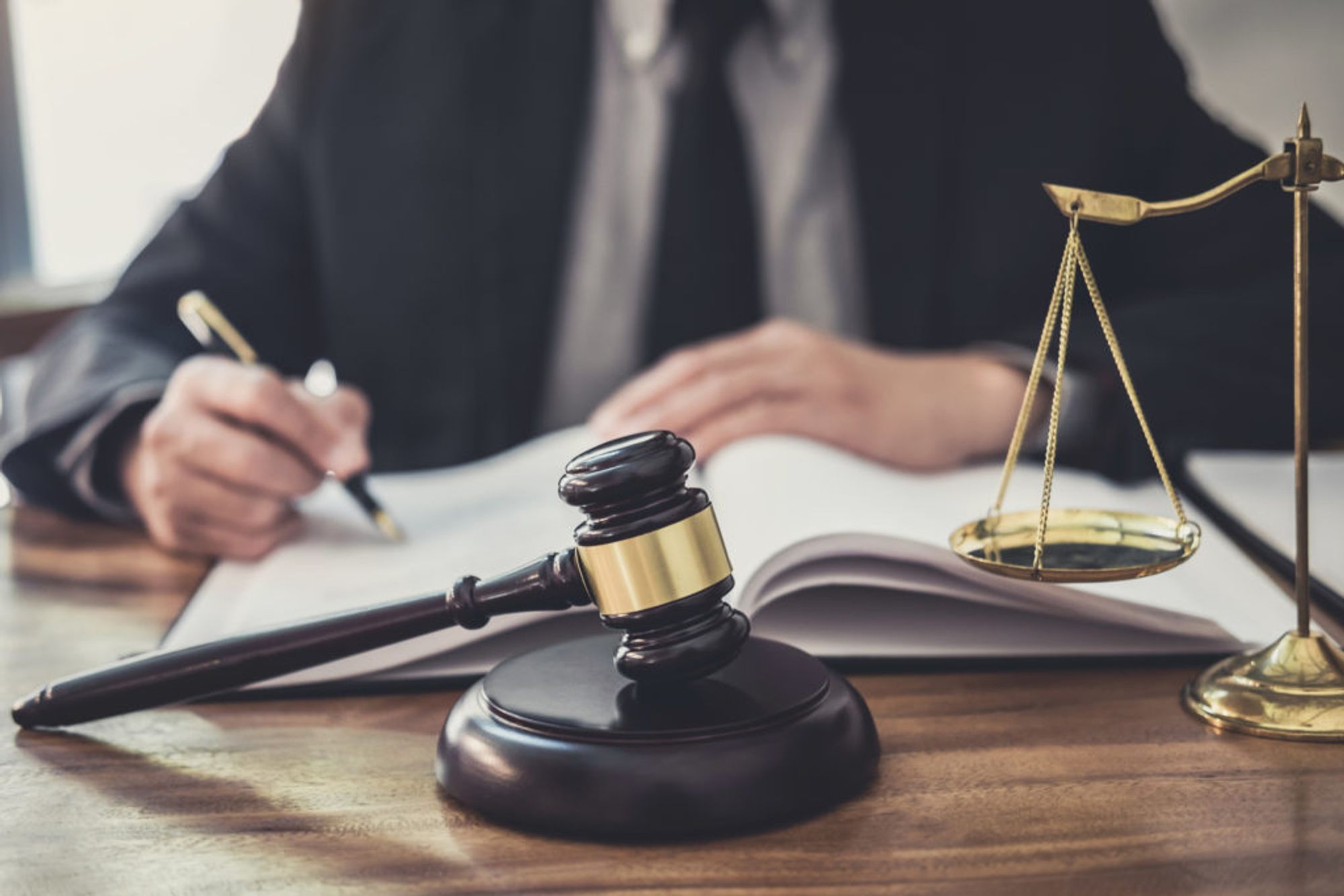
If there is no will or the will does not dispose of the entire estate, personal property passes according to the WESA provisions dealing with the devolution of property contained in Part 3 (ss. 19 to 35). Under the WESA, the recipients of property are determined by a parentelic distribution (by parent root) and are set out under ss. 20 to 23 of th WESA.
If a person dies without a will, leaving a spouse and surviving descendants, the spouse receives all of the household furnishings WESA s. 21 (2)
Note that household furnishings that pass to a spouse upon intestacy must have a household use or a recognizable connection to the use, enjoyment, or proper functioning of the home.
A gun collection owned by a deceased was not deemed to be a “household furnishing”, even though a portion of it was displayed in the home, as the enjoyment of it was predominantly related to the gun collection, and not to the enjoyment of the home itself. Zeitler v. Zeitler Estate, 2009 BCSC 500
On the other hand, where a painting and limited edition print had hung on the walls of a home for 42 years, the long elapse of time resulted in them becoming part of the “household effects” rather than "personal effects," and thus were deemed to be part of "household furnishings." Moyls Estate (Re),2010 BCSC 1150
Intestate succession is determined as at the date of death of the deceased. Partial intestacies are determined in the same manner, not when the partial intestacy arises (WESA, ss. 25 and 44).
4. How Does a Personal Representative Clean Out a Home?

Prior to Clean Out Day
Ensure home is secure:
- All keys should be collected right away.
- Consider if locks should be changed.
- Ensure the home alarm is operative and enabled.
- Consider installing home alarm if none was in place previously.
- Contact the local municipality to confirm the garbage collection schedule and what they will and won't collect at the curb.
Determine the location and hours of designated drop-off centers where you can safely recycle specialized items such as:
- plastic foam packaging
- plastic bags
- overwrap
- refundables
- small appliances
- electronics
- light bulbs and fixtures
- motor oil and antifreeze
- medications
- tires
- paint and pesticide
- batteries
- Retain a shredding company if there is a large supply of personal and financial papers to dispose of.
- Hire a truck (and crew) to move large items if required.
- Hire a piano mover if required.
- Hire a pest removal company if required.
- Rent a garbage dumpster if required.
- Hire a professional cleaning company to clean the home after the contents are removed.
- Determine who will be in attendance on clean out day and ensure there will be sufficient refreshments and food for everyone.
Ensure you will have required supplies on hand, including:
- work gloves and rubber gloves
- masks to protect from dust
- safety glasses or some other form of eye protection
- tools for disassembling furniture
- cleaning supplies
- wasp or insect spray
- flashlights and at least one trouble light (used by auto mechanics)
- step ladders and step stools
- first aid kit
- bottled water
- spackling compound to fill holes from removing pictures from walls
- large, heavy duty garbage bags, cardboard boxes, packing paper, bubble wrap, duct tape, masking table, markers
- Conduct an inventory of major household items.
- Conduct any appraisals in advance and circulate them.
- Identify potential sensitivities and areas of conflict, to the extent possible, in advance.
- If family and friends are unable to attend, consider circulating pictures of items to all parties with descriptions and appraised values as applicable.
- Identify items that have been specifically gifted and remove them from the home to a secure location.
Clean Out Day
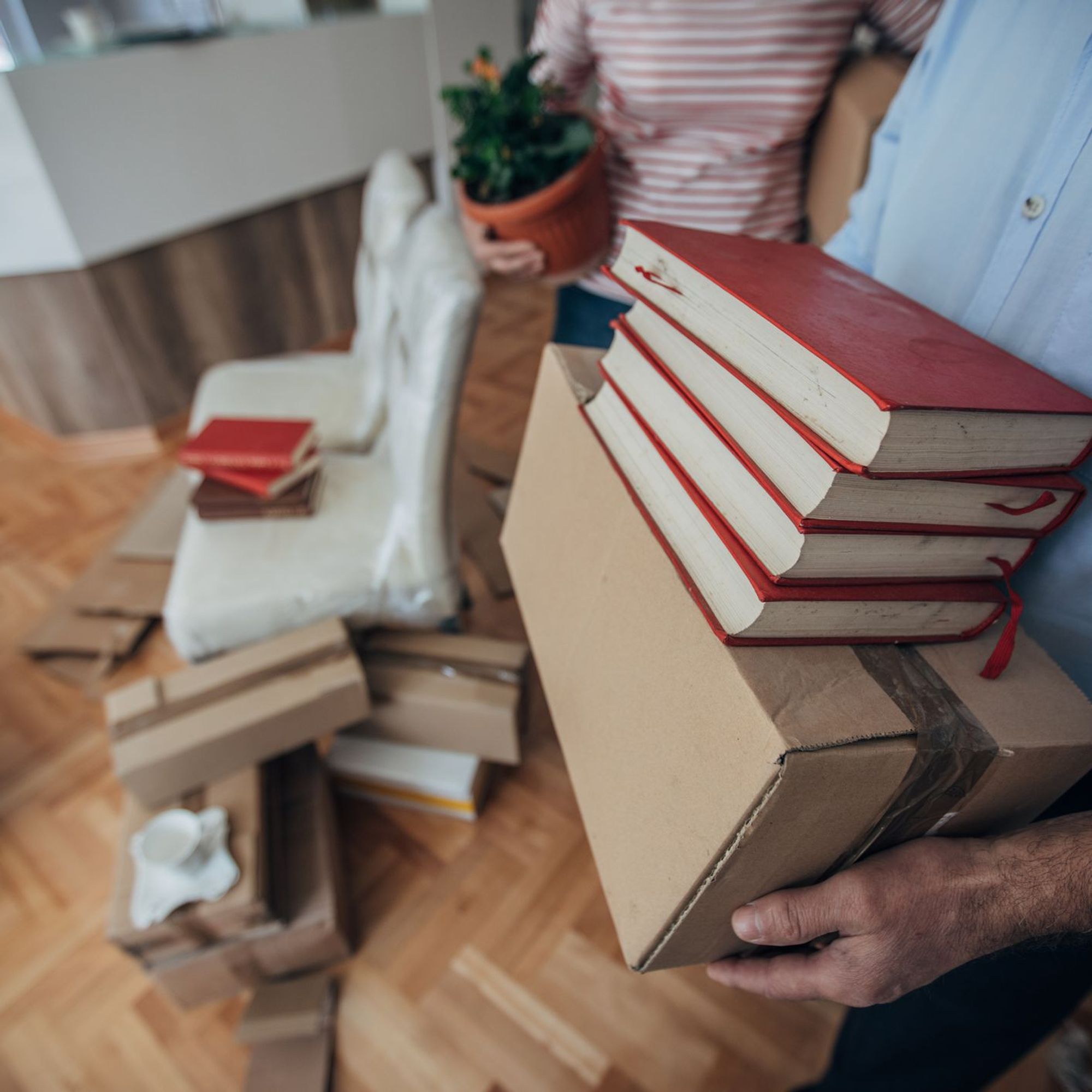
- Create a comfortable atmosphere with music, snacks and favorite photos of the deceased if applicable.
- Allocate specific areas for items: Save, Donate, Discard.
- Allow permitted parties time to walk through the home and identify items they would like to keep.
- Deal with disputes (see below).
- Assign teams of at least two to various rooms, beginning with the attic and moving down.
- Instruct everyone to look carefully for hidden treasure (mattresses, pockets, rafters etc.).
- Once the home is cleared out, walk through to ensure nothing is left behind.
- Connect lamps to timers to come on at night.
- Turn off all lights, electrical devices and set the thermostat at an appropriate temperature to conserve energy.
- Lock all doors and windows and set home alarm.
Where to Sell or Donate Items?
The information and resources below are gratefully sourced from Linda Chu's excellent resource:
Check with individual businesses or charities to ensure they will accept your items before dropping them off. Also, due to the COVID-19 pandemic, some of these resources may be closed temporarily or have other hygiene protocols in place. Please call ahead and verify before dropping off items.
Consignment
Furniture, Art & Instruments
- Coast Consignment: Upscale Furniture (transitional, mid-century, vintage, antique, and new), collectibles, artwork, outdoor rugs, and jewellery.
- Echo’s Discontinued China & Silver: Specializes in buying and selling china and silver flatware.
- IKEA: Their sell-back program will accept trade-ins on IKEA products for credit in the IKEA store.
- J.H. Tee: They purchase sterling (solid) silver. They do not purchase silver plate, jewellery, or coins.
- Long & McQuade Musical Instruments: Does not offer consignment but will accept trade-ins if you want to upgrade.
- Love’s Auctions: Antiques, collectibles, jewelry, art, furnishing, household goods, and more.
- Marvel Auctions: Quality collectibles, jewellery, tools, household items, estate pieces, furniture, or commercial equipment.
- MaxSold: Specializes in online downsizing & estate sale auctions.
- Maynards Auction: Fine art or antiques.
- RenuYourFurs: Clean, repair, restoration of fur clothing and accessories. They do not accept donations but can prepare your furs for sale, auction, or consignment.
- The Carriage House: Upscale consignment store focusing on unique, one-of-a-kind items.
Clothing
- Beansprouts: Current stylish, quality, seasonally appropriate brands, newborn – 12 years.
- Front & Company: High-quality adult and children’s clothing, home décor items, toys, and games.
- Little Earth: High-end clothing for babies and kids.
- MacGillycuddy’s: Specializes in high-end designer clothing for babies and kids.
- Mine & Yours: High-quality, pre-owned, luxury brand shoes, bags, certain clothing.
- Once Again Resale: High-quality, pre-owned, luxury brand shoes, bags, certain clothing.
- Shameless Resale: High-quality designer consignment for women’s clothing and accessories.
- Turnabout Luxury Resale: High-quality designer consignment for adult clothing and accessories.
Cash
General
Sports and Fitness Equipment
The following stores will buy good quality used sports and fitness
equipment. You have the option of cash or accept it as a trade towards
other items they sell. They may accept some items on a consignment
basis. Contact the store for more details.
Charity
Giveaway Classified Ads
Use these online sites to list items you would like to give away.
Clothing & General Household Goods
- Aunt Leah’s Thrift Store: Small appliances, kitchen items, home décor, jewellery, accessories, apartment-sized furniture, clothing.
- BabyGoRound: Specific baby and toddler items.
- BC SPCA Thrift Stores: Housewares, appliances, curtains, rugs, furniture (no mattresses), electronics, clothing, books, games.
- Big Brothers of Vancouver: Clothing, footwear, accessories, linens, housewares, small tools, small appliances of resale quality.
- Blanket BC: Collect and distributes blankets and warm clothing to shelter programs, families in need, emergency services, and Indigenous groups. They also donate to animal shelters. Look for their collection drives in the autumn months.
- Covenant House: Accepts limited items only. Visit their website for more details.
- Chrysalis Society: Women’s clothing, toiletries, hygiene products, linens, home décor, craft supplies.
- Diabetes Canada: Donation bins located on Vancouver Island and Okanagan areas.
- Downtown Eastside Women’s Centre: Clothing, toiletries, and feminine hygiene supplies.
- Evelyne Saller Centre: Clothing and shoes in good condition.
- Gathering Place: Men’s clothing, outerwear, and shoes in good condition. Musical instruments and game sets with all of the pieces.
- HOB Shop (Vancouver Hospice Society): High-quality, gently used & vintage women’s clothing and accessories. Their other location, HOB Shop Too, takes high-quality new, vintage, and nearly new household collectibles & memorabilia, and large and small furniture items, carpets, artwork, and lamps.
- My Sister’s Closet: Laundered, gently used clothing and accessories (e.g., shoes, handbags, jewellery) for all genders.
- Neverland Tea Salon: Antique and vintage teacups and saucers.
- North Shore Crisis Centre: Clean, good quality clothing, accessories, toys, small household items.
- Salvation Army: Clothes, furniture, books & housewares clean and in good condition.
- Secret Garden Tea: Antique and vintage teacups and saucers, teapots, sugar bowls, creamers, etc.
- SOS Children’s Village Thrift Store Foundation: Clothing, books, linens, housewares, home décor, seasonal decorations, some sporting goods, small furniture. All goods must be in a resellable condition. No appliances, electronics, toys, sofa beds or beds, textbooks, baby car seats, ski equipment.
- West End Seniors Network (WESN): Clothes and collectibles. Not accepting items during the COVID-19 pandemic.
- Wildlife Thrift Store: Clothes, furniture, books & housewares clean and in good condition. No mattresses, box springs, printers, or baby equipment.
- YWCA Metro Vancouver: Gently used clothes and housewares.
Specialty Clothing
- Dress for Success: Temporarily closed. Visit their website to subscribe to updates on reopening their donations.
- Sheway Pregnancy Outreach: Maternity, newborn, baby clothing and items, clean and in good condition.
- The Brides’ Project: Wedding gowns that are 3 years old or less and in excellent condition. The shop is located in Toronto, but there is a drop-off location in Vancouver.
- The Cinderella Project: New, unopened, unused cosmetics and toiletries for gift bags. Note: Donations of graduation-appropriate formal wear, dress shoes, and accessories for all genders are currently on hold. See their website for more details.
- Working Gear: Business casual clothing and construction clothing in good repair and clean.
- You Wear It Well: Provides students with gently used, current, stylish grad outfits at no cost. See their website for drop-off locations.
Furniture, Building Materials & Tools
- Habitat for Humanity: Appliances, cabinets, flooring, furniture (no mattresses or baby furniture), air conditioners, furnaces, heaters, insulation (still in the bag), landscaping material, lighting and electrical (no fluorescent or CFL bulbs), lumber, framed mirrors, plumbing (no toilets or hot tubs), roofing, sheet goods, windows & doors, painting supplies, home décor.
- Helping Families in Need Society: Their needs vary. Visit their website for a list of items they accept.
- HomeStart Foundation: Nighttables & dressers, kitchen & dining room tables, chairs & sofas (no sofa-beds), armchairs, coffee tables, bookcases, TVs & VCR/DVD players, radios, desks (not office-size), microwave ovens, telephones & lamps, rugs. No items with glass (e.g. glass tables)!
- Lookout Housing + Health Society (formerly The Living Room): Beds, furniture, household goods, linens, winter clothing, backpacks, toiletries.
- Luv-a-Rug (Victoria): Accept area rugs with bound edges in good condition. They clean them and donate them to various charities.
- PaintShare: A program that helps people pick up leftover paint collected at participating paint recycling locations.
- Return-It: Disposal of large appliances (refrigerators, washers, etc.).
- Shelter to Home: Household items and furniture, linens, dishes, etc. They can only accept furniture donations from North and West Vancouver locations.
- Tenth Ministries: Fill out the online form with your donation information, and they will see if they can take it. They do not have a warehouse to store goods. Items go directly to those in need.
- Vancouver Tool Library: Fill out the online form before donating, as some tools may not be accepted.
Books, Crafts & Hobbies
- Carnegie Centre: Musical instruments, especially guitars, arts and craft supplies, leather and leatherworking tools.
- Our Social Fabric: Clean unwanted fabric (minimum 1m), quilting cotton (minimum 0.50m), leather (minimum 30cm), related materials (such as upholsteries), trimmings, notions, patterns, sewing books. Please, no sheets, towels, or clothing.
- Oxfam Canada: Raises funds by collecting donated stamps and envelopes and sorting and selling stamps to collectors.
- Piano Teachers Federation: Pianos and keyboards in good condition.
- Purple Thistle: Youth-run community centre for arts accepts books and art supplies.
- The Land Conservancy: Raises funds by collecting donated stamps and envelopes and sorting and selling stamps to collectors.
- Urban Source: Craft and art supplies, vintage items, sewing notions, old magazines, and picture books in excellent condition.
- Vancouver Academy of Music: Musical instruments in good condition.
- Vancouver Public Library: Newer, gently used fiction and non-fiction books are sold year-round at book’mark, The Library Store, to raise funds for the library. Donations paused during the COVID-19 pandemic.
- West Coast Knitters: Clean, usable, pest-free yarn is passed on to people who can knit items for various charities.
Sports
- Bikes for All: Collect donations of used bicycles and parts. Unusable parts are recycled.
- Bikes for Tykes: Collect donations of used bikes every fall so they can fix them up to give during the holiday season.
- Kickstand: Bicycles, bicycle parts, and all sorts of scrub brushes and rags.
- Our Community Bikes: Accepts donations of bicycles, parts, accessories, and tools.
- Vancouver Bicycle Recycling: Collect donations of used bicycles and parts. Bikes are repaired and sold. Unusable parts are recycled. Most kid’s bikes are given away for free.
- Zanskar Ski School: Telemark, Alpine Touring, or Cross-Country equipment in reasonably good condition. Children’s sizes are most needed. Downhill equipment will be used if not too heavy or too long.
Electronics & Tech
- BC Technology for Learning Society: Windows 10 compliant computers, various peripherals, smartphones, and tablets.
- Call2Recycle: Batteries of all shapes and sizes weighing less than 5kg.
- Free Geek Vancouver: All computers and computer-related hardware, regardless of age or condition. They try to reuse everything. Otherwise, it is ethically recycled as locally and sustainably as possible.
- Return-It: Offers disposal of all types of electronics, including computers, stereos, and medical equipment.
- Recycle My Electronics: Accept all sorts of electronics and tech devices. 26 drop-off locations across Vancouver.
- The Hackery: All computers and computer-related hardware, regardless of age or condition. They try to reuse everything. Otherwise, it is ethically recycled as locally and sustainably as possible.
Medical Equipment
- ALS BC: Accept some medical equipment and supplies. Contact them to see what they need as it varies.
- Canadian Disability Resources: Create classified ads to sell or give away your medical equipment.
- Canadian Lions Eyeglass Recycling Centre (CLERC): Provides recycled eyewear free of charge to people in developing countries. Use the search function to find a location near you.
- Compassionate Resource Warehouse (Victoria): Contact them to see what medical equipment, tools, hardware, and housewares they need before donating.
- Give a Hand Vancouver: Businesses or organizations with large quantities of medical supplies, cleaning products, food, unused in unopened packages (e.g. toothpaste, adult diapers, feminine hygiene products, bottled water, etc.)
- Hope and Healing International: Accepts new and nearly new medical equipment and supplies.
- Red Cross: Accepts donations of easily recycled and cost-effective medical and health equipment to include in their equipment loan program.
- Rotary Club World Help: Collect and ship medical supplies and equipment around the world. Contact them first to see what they need as it varies with the shipment.
- Third World Eye Care Society: Eyeglasses are collected on behalf of local eye clinics, optical stores, and service clubs (Lions Clubs, Rotary Clubs, the Knights of Columbus). Contact one of these groups to arrange for donations.
Other Items
- Be Fresh Market: Accepts clean, reusable grocery and shopping bags in good condition.
- ChopValue: Bamboo chopsticks. Free chopstick recycling bin & free weekly collection.
- Donate a Car Canada: Accepting cars, trucks, vans, SUVs, motorcycles, boats, recreational vehicles.
- Food Bank: Accept non-expired, non-perishable foods and reusable grocery bags.
- Immigrant Services Society of BC (ISSoBC): Donate a car.
- Prairie Wildlife Rehabilitation Centre in Winnipeg: Collects clean, used mascara wands to brush baby animals.
- ReCORK: Collect natural wine bottle corks, ship them to ReCork to be recycled into new products.
- Vancouver Orphan Kitten Rescue Association (VOKRA): Cat food and cat toys and accessories clean and in good condition.
Recycling & Shredding
There are many options for recycling all sorts of unwanted or broken household goods. The best resource we have found for determining where and how to recycle is the Recycling Council of British Columbia’s Recyclepedia. Also, check out their Retailer Takeback Program that lists many retailers who offer voluntary recycling programs for various materials, including eyeglasses, batteries, small appliances, etc.
- TerraCycle: Their website lists many national recycling programs, from contact lenses to cleaning products to cannabis vapes to office supplies.
- Return-It: Offers disposal of all types of electronics, including computers, stereos, and medical equipment, as well as large appliances.
- Waste Control Services Inc. (formerly RedBag Recycling): Secure paper shredding, baby/child car seat recycling, styrofoam & soft plastic (businesses only).
5. How Does a Personal Representative Allocate Personal Property Between Beneficiaries and Resolve Disputes?
Who receives personal property in an estate is an issue frequently ignored until a crisis occurs.
It is often assumed to be an unimportant issue or an issue that will take care of itself. Experiences of family members and their advisors suggest otherwise. In fact, the allocation of personal property often creates more challenges among family members than the transfer of liquid financial assets.
The distribution of tangible personal property presents the following unique challenges:
- Personal property items often have different meanings for each individual.
- It is often the sentimental value or meaning attached to the personal property that is important, not the financial or dollar value.
- It is often very difficult to divide items with sentimental value in a way considered fair to all parties.
- People commonly have different perceptions of what constitutes a fair process and fair results.
- Talking about one’s possessions is much more personal than talking about financial assets. It often means facing one’s own mortality, as well as the death of family members, in a tangible way.
There are no magic formulas or solutions available for effectively transferring personal property. While not easy, managed well, the process of transferring of personal property can be a time for family and beneficiaries to reminisce, share memories and work through the grieving process.
Distribution methods that require planning prior to death include gifting, labeling items, making a will and preparing lists of personal property specifying the intended recipient. Auctions and other type of sales held either within the family or for the general public, or an in-family distribution utilizing some kind of selection such as a lottery, may occur either before or after the death of the property owner.
When property owners didn't plan for personal property transfer prior to their death, distribution options become more limited.

Some post-death distribution options are:
- Family Distribution
- Shake dice: Family members shake dice with the high roller receiving first choice, and so on. After the first round the selection order is reversed. After two rounds, family members shake again to determine a new order.
- Draw numbers, straws, or playing cards.
- Birth order preference: Selection goes from the oldest to youngest, or vice versa.
- Gender preference: Selection begins with males before females, or vice versa. Birth order may also be integrated into this method.
- Generation preference: Priority is given to parents, siblings, children, grandchildren, or blood kin.
- Allows the family to maintain control and privacy.
- May give all family members equal chance to receive prized items.
- Needs to recognize the difficulty to placing a dollar value on emotionally cherished items.
- Is often utilized immediately following a death while family members are still in the grieving process. This may be extremely difficult for some.
- Requires family members to be physically present to make decisions.
- May not reflect the property owner’s wishes.
- May not enable the stories to be passed on with the items if it occurs after the owner’s death.
- May emphasize differences in family status.
- May make it difficult for everyone to agree on how to determine a value (financial or emotional) for items.
Many families choose to distribute property privately within the family. When this is done, distribution may take place item by item, or items may be placed in groups of approximately equal monetary value and then selected as a group. Some methods which have been used by families to determine the order of selection are:
Things to consider:
- Private Auctions
- Allows special items to stay in the family and, thus, preserve memories.
- May enable wealthier bidders to “outbid” others when real money is used. Hurt feelings and damaged relationships may result.
- Allows everyone to have equal purchasing power if “funny money” is used.
- Allows funds to be paid into the residue of the estate.
- Allows the family to maintain control and privacy.
Family members buy items in open bidding. Families who choose this method may use real money or “funny money" such as marbles, poker chips or play money. If real money is used, the money generated will usually form part of the residue of the estate and may be subject to probate fees or income taxes. If funny money is used, each qualified bidder receives an equal number of units for bidding.
Things to consider:
- Silent Auctions/ Sealed Bids with Family Family members place written bids on items and the highest bidder receives the item. Money goes to the estate and may be subject to taxes.
- Allows more privacy in bidding.
- Allows quiet, less assertive people equal opportunity for securing items they want.
Things to consider:
- Public Auctions
- Allows items of sentimental value to go to individuals outside the family.
- May require that fees or a percentage of the sale be paid to the auctioneer.
- Doesn’t maintain family privacy.
Family members and the public bid for items. Proceeds from the auction will go to the estate. Proceeds may be subject to taxes.
Things to consider:
- Garage/Yard Sales
- May require disposal of unsold items.
- May present a challenge to arrive at a “fair market value.”
- Doesn’t maintain family privacy.
A public sale of this type works well to distribute items of little emotional or financial value. Proceeds go to the estate and may be subject to taxes.
Things to consider:
- Estate Sales
- May require that fees or a percentage of the sale be paid to the liquidator.
- Allow items of sentimental value to transfer to people outside the family.
- Doesn’t maintain family privacy.
Property is sold by a liquidator and the money goes to the estate. Proceeds may be subject to taxes.
Things to consider:
Managing Conflicts if They Arise

Conflict, of course, is not unique to the allocation of personal property items in an estate. Conflict flows from life and is continuously present in all human interactions. Conflict can be an opportunity to grow and increase understanding of people and their roles within families.
Proactive preparation, respectful and transparent communication, effective listening, empathy, patience and allowing sufficient time to elapse after a death can go a long way towards both avoiding and resolving disputes and hurt feelings over personal property.
In terms of processes to resolve disputes:
Negotiation is any form of communication in which opposing parties discuss steps they could take to resolve a dispute between them. Negotiation can occur directly between the parties and/or family members or indirectly through agents acting on behalf of the parties, such as family friends, community leaders such as clergy or formal advocates such as lawyers. Negotiation can be managed by a third party such as a professional facilitator.
- Mediation is a non-binding process in which a neutral, impartial third party with no decision-making authority attempts to facilitate an agreement between disputing parties. Mediation is generally a private dispute resolution process.
- Conciliation can range from an approach that is essentially mediation with a more interventionist third party or shuttle negotiations where the third-party neutral shuttles between the parties who are unwilling to meet in person.
- Med-Arb, short for mediation-arbitration, is a process in which one person acts first as a mediator and then as an arbitrator. If the initial mediation is unsuccessful, the mediator becomes an arbitrator and makes a binding decision.
- Arbitration is a dispute resolution process in which disputes are submitted to a neutral adjudicator through presentation of evidence and arguments. The arbitrator is empowered to render a binding decision. Arbitration is generally a private, voluntary method of adjudication.
- Adjudication refers to a dispute resolution process in which a neutral third party hears each party's evidence and arguments and renders a decision that is binding on them. This includes arbitration and traditional litigation (for example, a trial).
Which dispute resolution process is right for that particular family at that particular point in time with that particular conflict is, of course, contextual and dependent on many factors. Before choosing a conflict management process, it’s important for the personal representative to assess in a systematic way the source of the conflict, the type of the conflict, the severity of the conflict, how the conflict could be resolved, and the possible benefits and risks of each potential conflict management process.
Certainly a preferred method of conflict resolution for personal property disputes lies in collaboration or cooperative forms of third-party intervention. If conflict can be resolved constructively, it will minimize negative impacts on the parties, the family and the estate and may even serve to improve relationships going forward.
6. How Does a Personal Representative Transfer Personal Property to Beneficiaries?
s. 155 of the WESA provides that the personal representative must not distribute the estate within 210 days following the date of issue of an estate grant, except by court order or unless consents are first obtained from 1) all beneficiaries of the Will and all persons who may commence a proceeding under Division 6 of Part 4 of WESA to vary the Will or 2) all intestate successors if the deceased died without a Will
Practically, however, personal representatives often wish to distribute personal property with nominal or no market value before the 210 day period has elapsed. Before doing so, it is recommended that they seek written consents from those individuals required under s. 155.
Transfer documents are not normally required to transfer furniture and personal possessions, but a personal representative should obtain a signed and dated receipt from beneficiaries to document delivery of the item.
Transfers of motor vehicles are governed by the Motor Vehicle Act, R.S.B.C. 1996, c. 318 (ss. 17 and 18) and the Insurance (Vehicle) Act, R.S.B.C. 1996, c. 231. For further information, see:
Transfers of registered vessels are covered by the Canada Shipping Act, 2001, S.C. 2001, c. 26. For further information, see:
Unregistered vessels may be transferred to the beneficiary by bill of sale absolute. If the vessel has a licence, radio licence, or serial number, Transport Canada should be consulted about the appropriate documents to record the transfer.
7. What About the Costs of Shipping and Handling?
Canadian case law is limited on the issue of who bears the cost of transporting items bequeathed through an estate in situations where the terms of the will do not specifically address the issue of costs to transport a bequest.
In the case of Hayes v Swift (Executor of the Estate of Bernard William Hayes), 2021 SKQB 132 (CanLII), the Saskatchewan Queen's Bench stated as follows:
It is appropriate for an executor to incur moderate and reasonable expenses to transport a chattel to a specific beneficiary. There are a number of factors which may be relevant, such as the value of the estate, the cost of shipping or transportation, and the value and nature of the asset or chattel. However, this is within the executor’s discretion. The executor is under no obligation to incur out of the ordinary expenses which would then be charged against the residue of the estate. Such expenses should be borne by the specific beneficiary.
8. Conclusion
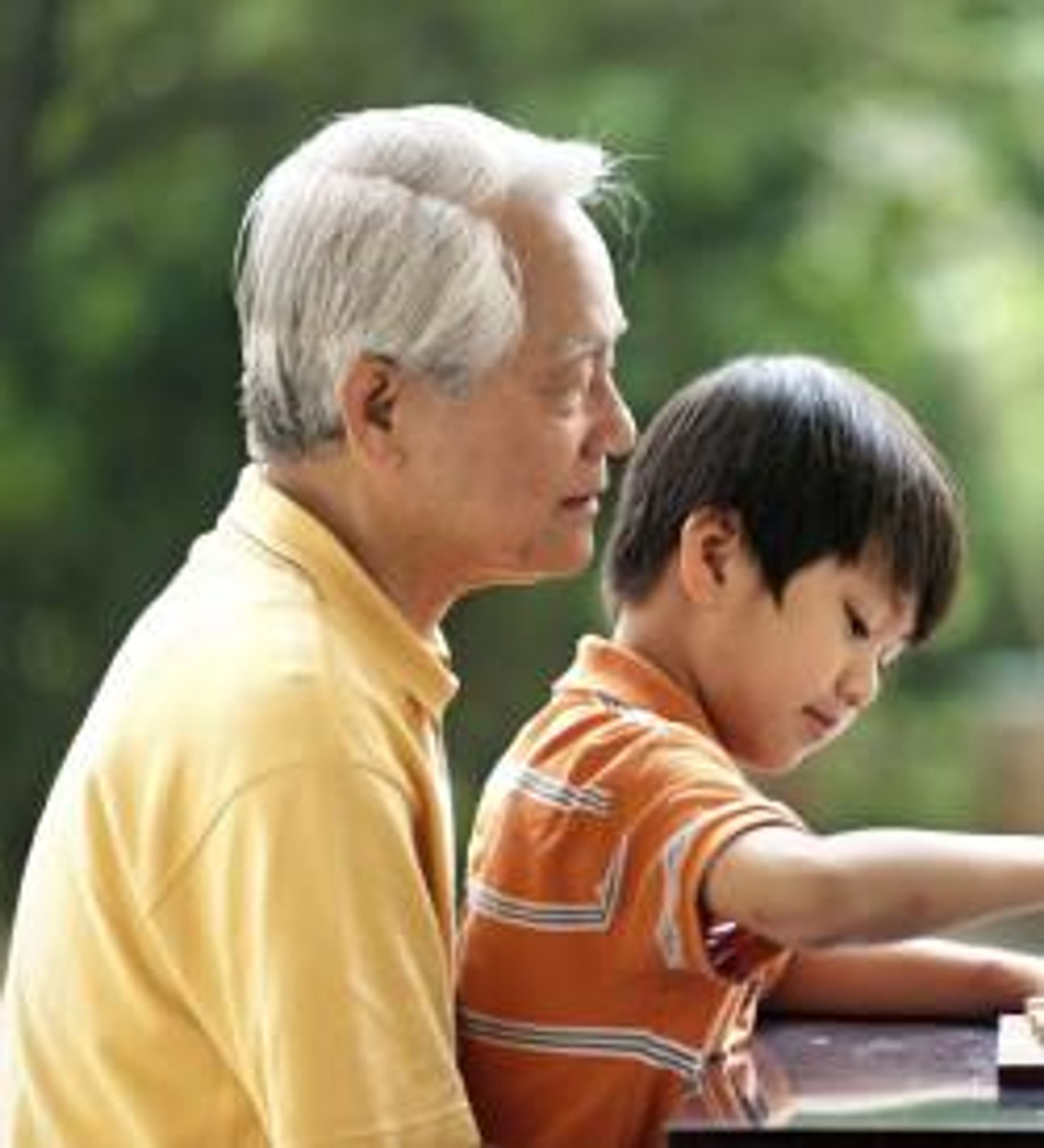
Although the path may be long and winding, effectively guiding the transfer of personal property from the departed to the recipients lowers stress for the family, reduces potential liability for the personal representative and can facilitate a legacy of true resonance and meaning.
P.S. If you would like to get started on your own planning, here is a resource which may be helpful:
Thank you to Emma McArthur and Michelle Isaak who provided valuable feedback on this guide.
